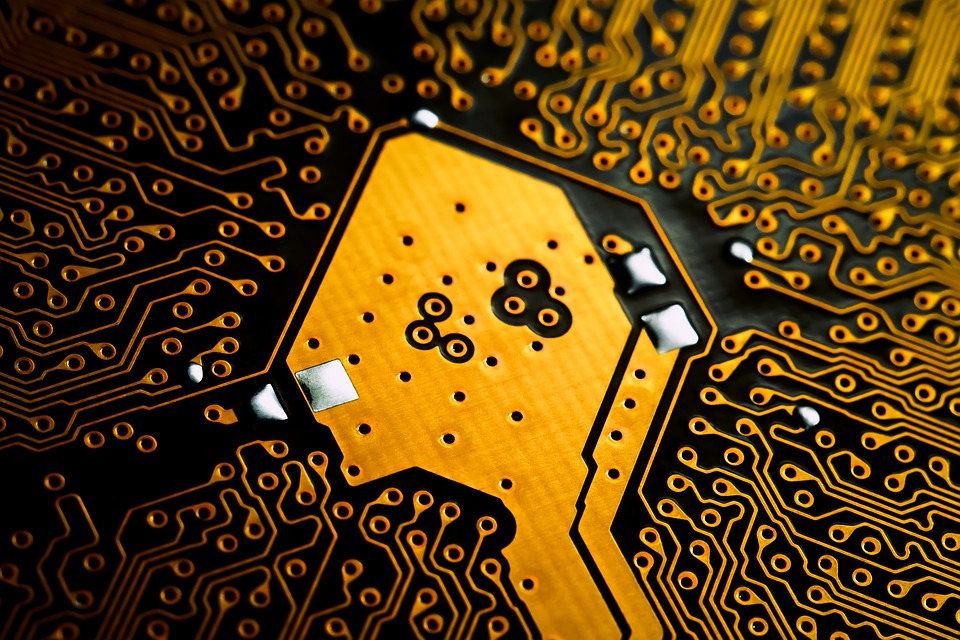As electronic products undergo continuous optimization and upgrading, the printed circuit boards within them that hold all their components, are also under continuous improvement. According to Rush PCB Inc, the introduction of ceramic circuit boards has led to significant advancements in performance and functioning as compared to the traditional glass fiber or FR-4 boards, and other metal clad boards made from copper and aluminum.
However, just as with all things, printed circuit boards with ceramic substrates have both advantages and disadvantages, with the advantages outweighing the disadvantages by a large margin.

Advantages of Ceramic PCBs
High Stability
Manufacturers make regular printed circuit boards by bonding copper foil over a substrate material. The substrate material can be of various materials like phenolic resin or FR-3, glass fiber or FR-4, PTFE, Copper- base, Aluminum-base, composite ceramics, and others. The bonding material is usually epoxy or phenolic.
Several factors may cause the PCB to warp to a varying degree. These factors can be of chemical nature, from thermal stresses, improper production processes, and others related to PCB production. Asymmetric copper thickness and bonding on two sides of the substrate during fabrication of the copper clad may also lead to warping of the board.
For a ceramic PCB, manufacturers bond the copper circuit to the base material using magnetron or vacuum sputtering technology. This creates a very strong bonding force, preventing the copper foil from easily peeling off. Ceramic boards are therefore, highly stable and reliable.
Higher Current Carrying Capacity
Compared to regular printed circuit boards made from glass epoxy, ceramic boards have a substantially higher thermal conductivity. Therefore, ceramic boards can efficiently remove heat generated from copper tracks carrying high currents. For instance, a ceramic board with a 1 x 0.3 mm copper track carrying 100 A current will have a temperature rise of about 17 °C. Another ceramic board, with a 2 x 0.3 mm copper track carrying the same 100 A current, will show a temperature rise of about 5 °C only.
High Thermal Conductivity
Compared to alumina, whose thermal conductivity varies from 12-38 W/m.K, and aluminum nitride with a thermal conductivity between 170-230 W/m.K, the thermal conductivity of the ceramic substrate can reach about 230 W/m.K, depending on its material composition and preparation methods.
Thermal Coefficient of Expansion
Depending on its high bonding strength, the thermal coefficient of expansion for ceramic substrates matches that of copper more closely.
Low Thermal Resistance
As ceramic substrates have a high thermal conductivity, it follows that they will exhibit low thermal resistance. For instance, for a ceramic substrate of size 10 x 10 mm, a thickness of 0.63 mm exhibits a thermal resistance of 0.31 K/W, a thickness of 0.38 mm has a thermal resistance of 0.19 K/W, and a thickness of 0.25 mm shows a thermal resistance of 0.14 K/W.
Low Dielectric Loss
Ceramic substrates exhibit low dielectric loss when subjected to an electromagnetic field. Material with high electrical conductivity allow free electron flow when subjected to a charge. However, insulators show low electrical conductivity and low electron movement. Many industrial applications require an insulator such as ceramic substrates that can withstand high levels of voltage without much dielectric loss.
Low Dielectric Constant
Ceramic boards are highly stable even in the presence of high humidity and high temperature. This is on account of ceramic substrates having a low dielectric constant that allows the board to remain unchanged or undamaged in extreme environmental conditions. That means, devices using ceramic boards will show higher reliability, better quality, and add to the safety.
High Dielectric Strength
Ceramic substrates can withstand high electrical voltage before they break down. This is much higher than regular printed circuit board materials can withstand. Also, ceramic substrates can withstand high voltages for a longer period of time without breaking down, compared to other materials. This makes ceramic substrates much superior insulating materials.
High Volume Resistivity
This is a measure of how strongly a material can resist the flow of an electrical current. Compared to regular PCB materials, ceramic substrates have a substantially high volume resistivity even at elevated temperatures. This is a very important characteristic, as it translated to being ESD or electrostatic discharge safe, protecting sensitive components mounted on the board from ESD.
High Cosmic Ray Resistance
Ceramic PCBs can resist cosmic ray radiations substantially. This feature may not be significant for devices working on the surface of the earth or nearby, but for aerospace devices, this is a matter of great importance. This is because in space, there is a greater exposure to higher levels of cosmic ray radiation. Where cosmic radiation may damage regular PCBs, ceramic PCBs offer a substantially better option.
Disadvantage of Ceramic PCBs
High Cost
Although the cost of a ceramic board is more than that of a regular board of the same size, the cost to performance ratio is much lower for a ceramic PCB. For instance, as the life of a ceramic PCB is substantially higher than that of a regular board, a ceramic board will require far lower replacements.
Highly Fragile
Ceramic boards, being brittle, are more fragile compared to regular printed circuit boards. Therefore, ceramic boards require better and careful handling. For instance, while mounting inside a device, the operator must be careful to not put any undue pressure on the ceramic board that can cause it to twist. Therefore, most ceramic boards are of a small form factor.
Low Availability
Not many manufacturers supply the right type of ceramic boards. This low availability adds to the higher cost of the boards.
Conclusion
On account of its advantages, ceramic boards are becoming more popular in applications like solar panel components, high-power electronic modules, high-frequency switching power supplies, automotive electronics, solid state relays, high-power LED lighting products, aerospace and military electronics, and in communication electronics.
Rush PCB Inc make all types of high quality printed circuit boards. For any specific requirement, please contact us today. We will be glad to help you achieve your goal.





